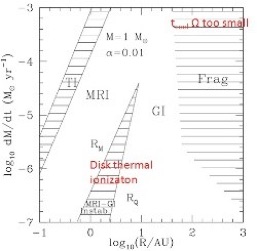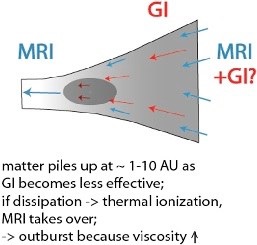
These FU Orionis outbursts of protostellar disks can be used to study the disk accretion mechanism.
2.1 Disk unstable region:

2.2 Outburst 2-D simulation:


Click the Image for Movies

These FU Orionis outbursts of protostellar disks can be used to study the disk accretion mechanism.
2.1 Disk unstable region:

2.2 Outburst 2-D simulation:


Click the Image for Movies